Nostalgia
We're keeping a blog of our work plus bits and pieces as they develop.
Labels: beauty, composition, dance, elizebeth randall, travel
Labels: beauty, composition, dance, elizebeth randall, travel
 Notes for a variation on Torna a Surriento:
Notes for a variation on Torna a Surriento:Labels: beauty, composition, music, sfcco
 Of Mordake, not yet released:
Of Mordake, not yet released:The music is convoluted and tumultuous yet well ordered in its own fractal logics, the lyrics sung in English in Duykers' heroic exhortations ever attempting domination of the reedlike insinuations and madnesses of his sister, snakily evoked through Korporate Marionettes' devices to produce a mocking hectoring from Duykers' own vocal chords (remember, this is a solo opera!), the result effecting a personality split and schizophrenias effective on more than one level. On top, to the side, and underneath, Wold crafted a welter of environments leaping from harsh urgency to ambient tranquility shot through with muted echolalia—the bridge from Go Get Our Supper! to What Have You Done? being a great example.This daring purveyor of far horizons favors nightmare and the disturbing undermatrix of consciousness in his work, and Mordake is his most impressive evocation of that since Taking the Veil, to my mind stunningly high art…
 and the Missa, in the online review journal FAME:
and the Missa, in the online review journal FAME:The voices are largely female and angelic in the extreme, male counterpoints recessed, with the cathedral's echo providing an expansive golden warmth to the massed encantings, a palpable feel of heavenly dimensions ... There are effulgent passages of Godly sentimentality but also the turbulence of the states between [Him] and man, reminders of our fall from Grace.
 At the Solomon R. Guggenheim a few days ago, wandering, fiddling with the iPhone, stepping into an annex gallery with an instantiation of the work to the right, surround by customers of the enterprise who, walking too close, were shooed away by the guard, lest they befoul the befouled floor, and, stepping back, looking at the work: a power cable to a bulb of light, once ensconced in a block of frozen ink, now lying at the bottom of a dry black lake, meandering to a puddle against the far wall, struggling a bit to find explication, note the text written by the curator and move quickly to it, presented on the white gallery wall in a carefully chosen and carefully kerned font, spending more time observing it than the forms on the floor, and so do we. Do they find what they are looking for? Let's check. Some quotes, not quite as beautifully presented but nonetheless here they are:
At the Solomon R. Guggenheim a few days ago, wandering, fiddling with the iPhone, stepping into an annex gallery with an instantiation of the work to the right, surround by customers of the enterprise who, walking too close, were shooed away by the guard, lest they befoul the befouled floor, and, stepping back, looking at the work: a power cable to a bulb of light, once ensconced in a block of frozen ink, now lying at the bottom of a dry black lake, meandering to a puddle against the far wall, struggling a bit to find explication, note the text written by the curator and move quickly to it, presented on the white gallery wall in a carefully chosen and carefully kerned font, spending more time observing it than the forms on the floor, and so do we. Do they find what they are looking for? Let's check. Some quotes, not quite as beautifully presented but nonetheless here they are:Kitty Kraus (b. 1976, Heidelberg, Germany) ... works in a spare, elegiac vocabulary of monochrome forms ... possess an internal volatility that can prompt their gradual fragmentation or sudden collapse ... The trajectory of dissolution at the heart of Kraus’s work ... a young artist defining her career at the beginning of the 21st century—a time of profound questioning and global crises—Kraus rehearses the trend towards degradation and chaos known as entropy, finding a mournful beauty in the literal and symbolic failure of form.Probably the curator meant to say something about nature's trend toward increasing entropy, but still, that is a minor point. The writing is lovely, meaningless, mournfully beautiful itself. If I could write half so well I would die this instant just to be sure of my ascension into heaven. Like the new-music program note, it is the work, it is more interesting than the work, the writer is the artist, the writer is the giver of justification to the art-industrial complex for the money they have laid out to purchase that which they don't understand in and of itself.
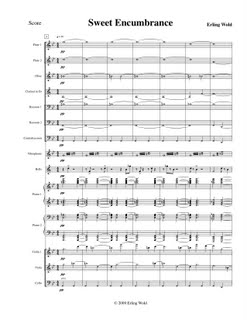 Continuing with the treacly investigation of romance and its elations, its euphoric pleasures, begun with Two Orchestral Waltzes for Lynne, the current work, Sweet Encumbrance, makes manifest, in sound, the joyous warmth, the sweet iron fetters and the small panics which flow from hogtying oneself together with one's chosen helpmeet and companion. In this piece, it is demonstrated in some detail how much one can gain in life simply by giving up one's philandering, and, while still given license to strut and flirt and still authorized to play the dandy, one must now, for the foreseeable future, festoon one's costume with the leash and collar and electronic ankle bracelet, sometimes visible but most often invisible, like the line that one might be enticed to cross save for the memories of the previous attempts' resultant truncheoning and electric shocks. But let us not dwell on such past pains, but please to look to that bright future world illumined by the brightest and whitest of most pure light where, joined in glory and set upon one's throne just to the right of the Empress, in a new Sagrada Familia, happily holding court, happily holding the hand of the one most beloved.
Continuing with the treacly investigation of romance and its elations, its euphoric pleasures, begun with Two Orchestral Waltzes for Lynne, the current work, Sweet Encumbrance, makes manifest, in sound, the joyous warmth, the sweet iron fetters and the small panics which flow from hogtying oneself together with one's chosen helpmeet and companion. In this piece, it is demonstrated in some detail how much one can gain in life simply by giving up one's philandering, and, while still given license to strut and flirt and still authorized to play the dandy, one must now, for the foreseeable future, festoon one's costume with the leash and collar and electronic ankle bracelet, sometimes visible but most often invisible, like the line that one might be enticed to cross save for the memories of the previous attempts' resultant truncheoning and electric shocks. But let us not dwell on such past pains, but please to look to that bright future world illumined by the brightest and whitest of most pure light where, joined in glory and set upon one's throne just to the right of the Empress, in a new Sagrada Familia, happily holding court, happily holding the hand of the one most beloved.Labels: beauty, composition, lynne rutter, music
And beneath upon the hem of it thou shalt make pomegranates of blue, and of purple, and of scarlet, round about the hem thereof; and bells of gold between them round about:
A golden bell and a pomegranate, a golden bell and a pomegranate, upon the hem of the robe round about.
And it shall be upon Aaron to minister: and his sound shall be heard when he goeth in unto the holy place before the LORD, and when he cometh out, that he die not.
Labels: beauty, composition, mass, music
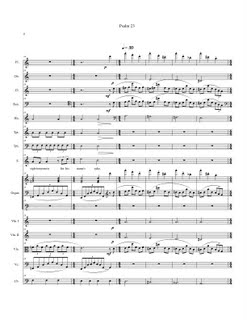 The compact disc of my Missa, although wholly encapsulating a sad and dying medium of auditory exchange, is at least visually luminous and beguiling thanks to Karen and should be available quite soon, as soon as I can bring myself to go through all the recordings of both performances in some detail and make a final determination of what is the best and what is not. The chalice awaits the thick nectar of the reverb-heavy-laden music decanted, then held to the lips to succor those in spiritual need. Although I have attempted to interest a few of the typical classical music vendors in the product, it will be a vanity press item, made simply for the delight of my fans and so that I can continue to gaze longingly at my own reflection.
The compact disc of my Missa, although wholly encapsulating a sad and dying medium of auditory exchange, is at least visually luminous and beguiling thanks to Karen and should be available quite soon, as soon as I can bring myself to go through all the recordings of both performances in some detail and make a final determination of what is the best and what is not. The chalice awaits the thick nectar of the reverb-heavy-laden music decanted, then held to the lips to succor those in spiritual need. Although I have attempted to interest a few of the typical classical music vendors in the product, it will be a vanity press item, made simply for the delight of my fans and so that I can continue to gaze longingly at my own reflection. My dear friend Bunnywhiskers has moved her radio show to a new time and a new location and has asked me to ennoble her and her program by appearing, tonight, the 12th of August, 2009, two days past the Perseid peak, on FCC Free Radio at 107.3 on your FM dial here in San Francisco, or streaming online at the address you just passed over. We will talk of many things, surely including music and love and grace, and read excerpts from favored books and maybe the libretto from my upcoming production, possibly even giving away a free CD. All is possible. For those of you coming across this entry in the future, there may be a link to a recording of the show here.
My dear friend Bunnywhiskers has moved her radio show to a new time and a new location and has asked me to ennoble her and her program by appearing, tonight, the 12th of August, 2009, two days past the Perseid peak, on FCC Free Radio at 107.3 on your FM dial here in San Francisco, or streaming online at the address you just passed over. We will talk of many things, surely including music and love and grace, and read excerpts from favored books and maybe the libretto from my upcoming production, possibly even giving away a free CD. All is possible. For those of you coming across this entry in the future, there may be a link to a recording of the show here.Labels: art, beauty, bunnywhiskers, radio

Labels: art, beauty, teddy ruxpin, theater
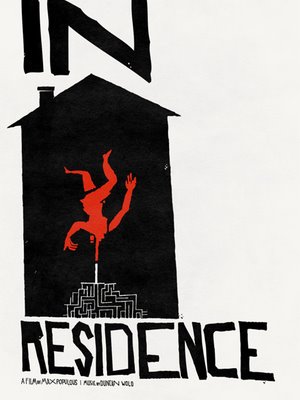 My son, showing that he is a child of the same Adam, has constructed a heavenly collection of musical fragments, a Soundscape for a Nonexistent Motion Picture, but which, by its synopsis, makes one strongly wish for its actual production:
My son, showing that he is a child of the same Adam, has constructed a heavenly collection of musical fragments, a Soundscape for a Nonexistent Motion Picture, but which, by its synopsis, makes one strongly wish for its actual production:This haunting film is not for the faint of heart — or the claustrophobic. We are presented with Jane, an artist who begins a residency at a strange home filled with junk. Her goal is to fashion the detritus into a piece of artwork speaking to the theme of recycling and ‘green’ building practices. But things get twisted when the junk compels her to construct an elaborate and, at times, beautiful trap for herself, which she slowly begins to realize is locking her in, pressing her downward into infinite, interlocking chambers. Even as she becomes more entangled in the web of the house, it begins to provide her with sustenance necessary to continue her work.
— Dina Bloomberg, Down the Rabbit Hole Zine
Labels: beauty, composition, duncan, film, music
 and that is poetry, in this case the poetry of Bunnywhiskers resting her tired coney body after a day's hunting and being hunted, me the eternal gentleman.
and that is poetry, in this case the poetry of Bunnywhiskers resting her tired coney body after a day's hunting and being hunted, me the eternal gentleman.Labels: art, beauty, bunnywhiskers
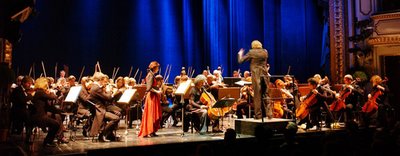 I met Elena and Alexei when they performed in the 2001 Austrian production of A Little Girl Dreams of Taking the Veil, Alexei on the podium and Elena covering the viola, my favorite bit of which is the brief and registrally displaced but oh so beautiful solo here:
I met Elena and Alexei when they performed in the 2001 Austrian production of A Little Girl Dreams of Taking the Veil, Alexei on the podium and Elena covering the viola, my favorite bit of which is the brief and registrally displaced but oh so beautiful solo here:
When I see a kid composing in units of measure, measure, measure, with a new impetus, new phrase, new harmony on every downbeat, I start in with my wheedling tone (every experienced composition student will recognize the sound): "How about a triple upbeat to start that melody off a little more gracefully?" "How about we vary the harmonic rhythm here?" "You think the audience can't hear where your bar-lines are if you don't accent every one?"
Labels: beauty, composition, electronic music, opera
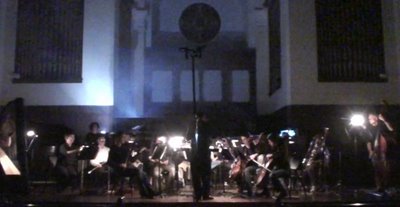 Tonight is the night, and the SFCCO players are sounding good. A few complaints and threatened defections from the orchestra over the fog, but they are into it, what started as a stretch has now become commonplace. And I'm so happy to get my noise self out. Michael Cooke has told me it's his favorite piece of mine ever, and he's heard a lot. It is to go on the shelf with other obscure pieces of mine (the 49ers opera, the Trary Ruxpin accordion duets) that have become my friends' favorites?
Tonight is the night, and the SFCCO players are sounding good. A few complaints and threatened defections from the orchestra over the fog, but they are into it, what started as a stretch has now become commonplace. And I'm so happy to get my noise self out. Michael Cooke has told me it's his favorite piece of mine ever, and he's heard a lot. It is to go on the shelf with other obscure pieces of mine (the 49ers opera, the Trary Ruxpin accordion duets) that have become my friends' favorites?
 I was asked to participate this morning in a paid interview - in cash, in the form a single piece of currency: the bill with the drunken general and the corrupt president - by the San Francisco Foundation, and it got me to thinking about my whorish nature, a term I use with the ultimate in positive connotations, as many whores are counted among my best friends, and I can only aspire to such clear thinking and take-charged-ness.
I was asked to participate this morning in a paid interview - in cash, in the form a single piece of currency: the bill with the drunken general and the corrupt president - by the San Francisco Foundation, and it got me to thinking about my whorish nature, a term I use with the ultimate in positive connotations, as many whores are counted among my best friends, and I can only aspire to such clear thinking and take-charged-ness.
 Bath-time this morning was facilitated by an iPhone 3G® in a Ziploc® bag - thanks to my friend Nicole for enlightening me of this wonderful invention - and a circuitous path through those intoxicating days early in the last century where Hilbert and Brouwer led the fight over the non-finitary law of the excluded middle (see photo) and other such issues.
Bath-time this morning was facilitated by an iPhone 3G® in a Ziploc® bag - thanks to my friend Nicole for enlightening me of this wonderful invention - and a circuitous path through those intoxicating days early in the last century where Hilbert and Brouwer led the fight over the non-finitary law of the excluded middle (see photo) and other such issues. Labels: beauty, composition, music

Labels: beauty, composition, electronic music, music, sfcco
 My literate writing time recently has been spent primarily on the blog I started with my sometimes librettist and always friend Jim Bisso, the explanation for which is somewhat difficult but is revealed by the gestalt of the postings en masse. UPDATE: this blog is no more, but its core has been folded into the E.W. blog hierarchy.
My literate writing time recently has been spent primarily on the blog I started with my sometimes librettist and always friend Jim Bisso, the explanation for which is somewhat difficult but is revealed by the gestalt of the postings en masse. UPDATE: this blog is no more, but its core has been folded into the E.W. blog hierarchy.Labels: beauty, lynne rutter, nazi, sfcco


Lou Harrison's Music Primer was one of many very influential and important books in my musical development. At the time I read it, I was rediscovering a certain melodic simplicity in my own work. His ideas shaped some of mine, but I was especially taken with one particular passage, somewhat outside of the world of music composition per se, but dealing with that which is most important to a career in the arts, namely that a pure career in the arts is an essential impossibility:
If you really have to be a composer and are attractive and uninhibited, then try and get yourself “kept” – whether by woman or man. This might be easier than undertaking a whole second career in order to be able to afford composing, and you might get a little restorative affection as well.
Unfortunately, I was stupid enough, and probably too inhibited at the time - my late teens, not to follow his advice, to try to make a go of the 'second career' path, to give up sleep, and not to take the high road: to flatback and think of England, to become a good wife, flipping my hair and asking on my knees for a bit more pin money from my loving husband.
But later in life I did figure out that the judicious - or injudicious - placement of my unit in a number of compromising positions could in fact be helpful to the bit of musical career that I eked out on the side. In the late-mid 80s I started working with choreographer and dancer Miss W_ on an extended series of pieces. The first and maybe the best was Crash, an hallucination on the already hallucinatory J.G. Ballard novel. My pal Henry Kaiser had recently purchased a Synclavier and a few of the local classical avant types were thrusting their bowls in his face and asking for a bit of the corn gruel drippings off its gleaming steel and black plastic but I had a key, haha!, since Hank and I were working on Secrets and Mysteries (aka Secrets of the Unknown) with Edward Mulhare, using the early sampler to write as much music as quickly as possible. I stole into his beautiful little studio and worked all night every night coaxing as many floating microtonal lushnesses as I could for Crash and Hagalaz and the others. And why, may one inquire, would I work my little ears to the ossicles to find the perfect romantic musical moment, the perfect twist of pitch ratios adding a glint of a knife to a pretty harmony? Because I was in love. And, when Miss W_ came to hear it for the first time, sitting in the dark of the studio late at night, the fullness of my gift fell upon her, parting her lips, spreading her legs ever so slightly. Later, at a restaurant far away, she looked into my eyes and told me of her most favored venereal pleasure, something so near and dear to my heart that my pulse quickened at the thought, and I flipped through a number of scenarios and possibly near-term advantages and pleasures, but, like everyone else who desires and desires so strongly, I hadn't quite thought through the rest of the story: the pain, the recriminations, the crying and the destruction and the loss, but, before that all came to pass, we spent ourselves through a burst of creativity that produced some of my still favorite works, and some of my still favorite memories: risky sweaty writhings under soft sheets, towels put down to catch the blood; hot tubs overfilled of naked lissome dancers, their supple fingers probing under the foaming jets; furtive quasi-couplings in cars, backstage before a performance, in the corner of a darkened gay bar; sweet shared conspiracies.
And at one of our performances at the Lab in San Francisco was a young choreographer named Robert Wechsler, just beginning to develop a new language of sinuous dances based on groups, canons and symmetries, where the dancers moved quickly through each other in seemingly impossible ways, who took a liking to me (and I'm sure Miss W_), and he kept in touch, asking me from time to time to contribute short soundtracks to dances, e.g. Modules and Loops. Not long after, Robert developed some financial complexities in the US, and moved to Nürnberg to allow things to cool. By the mid 90s I had forgotten all the lessons learned with Miss W_ and was embarking on another long walk off a short pier with Ms. A_. Once again, I enjoyed a burst of creativity, my pen pouring out one inspired score after another, intending to woo and succeeding again beyond my expectations and beyond my ability to deal with it. Once again, I found myself pressed against a lithe body, this time straddling me, allowing my hands to wander over her prepubescently boyish frame, a suggestion of immodest nature whispered to me, hot breath on my ear, kisses on my face. Once again, I was caught up in clandestine plans, this time of a global nature, a vast intrigue tapping into a worldwide network of co-conspirators. I accepted an offer from Robert to come to Europe to work with his company, Palindrome, on an evening of dance and music using a set of interactive technologies: a MIDI controlled pipe organ, dancer-tracking software, heartbeat monitors, the very new and pre-browser Internet. And surprise, it so happened that Ms. A_ was working on a project in Prague, a short train ride away, and so came to visit, pleasantly insinuating herself in the company and, after I left, performing on tour with them through Austria.
While performing with Palindrome in Klagenfurt in the south of the Austrian republic, Ms. A_ left a tape with the theater of my first chamber opera, A Little Girl Dreams of Taking the Veil. Although they didn't care much for the production, a reflection I believe on the cultural divide between the Old and New World, they found themselves drawn back to the music a number of years later and asked me if would be willing to have them perform it and, if possible, to develop a version in German. Although, by the time this came about, my life had plummeted into chaos and into an even more complex sexual by-now-quadrangle including another Ms. A_, a young woman of great vigor and blondness who evinced in me a before unknown tendency for obsessive stalking behavior, one of the high points of my life came while descending into the Klagenfurt airport, a Tyrolean Air flight attendant in an absurdly sexy dirndl leaning over me, noticing a photograph of a woman's mouth covered in blood in the newspaper of the passenger in front of me, seeing my name in the caption of that gory image, landing a few moments later and being greeted as Maestro by the theater director, sweeping me into the dress rehearsal and a magical otherworld, jetlagged and fagged and fashed. The first Ms. A_, who was again performing in the Easter bloc, once again came to meet me, but this scene quickly descended into the by now familiar recrimination, tears, anger, drama and worse and worse. As Ali Tabatabai once told me, we theater folk know not where the stage ends. But, just possibly, do the means justify the terrible endings?
And this now reminds me: a dream-like trip to Amsterdam with a friend to live out one of her fantasies: that of having two young Dutch boys simultaneously. We tripped and traipsed and shagged our way through the red-light district looking for connections to these ultimate striplings, the perfect combination of enthusiasm and ability and fresh-faced boyishness. In one of these fact-finding encounters of flat-backing fieldwork, the two of us were huffing and puffing and panting over a quite amazingly beautiful and busty Dutch fille de joie who, hearing of our desires, gave us her mobile number and invited her to her wedding in Rotterdam the next week, assuring us that her soon-to-be husband and one of his friends would without doubt fill the bill and that having some other artistic & libertine types there would surely be of benefit to all.
And so, after Klagenfurt and the collapse of the entire quadrangle in flaming death, and as a period of even more intense sluttiness and my relationship with Lynne "die Zweite" began, the Max Ernst museum in Brühl and I planned to have the Little Girl opera performed as part of the dedication of an Ernst sculpture, newly installed. I showed up in town with my freshly blue hair, gathering some curious stares from the locals, overseeing the installation of an outdoor stage for the production, the arrival of the ensemble and all the rest. Also, at this time, Sub Pontio Pilato, also recently translated into German, was heading for its quirky premiere in Austria where a certain Miss B_ was starring, who wanted to come up to Brühl to meet me and see something of what I do. I was feeling my oats, as virility comes with success, and something happened which my gentlemanly upbringing does not allow me to divulge. Even though, with some familiarity, this led to some drama back home with the Empress, Miss B_ and I cemented a personal and artistic connection so that, after the Pilate premiere, she went back to St. Gallen and played the Credo from the opera for the musical director at the Abbey. After an Austrian review of Pilate claimed that the Credo must have come from a pre-existing Mass, I wanted to create such a thing: a crucifix of pieces overlaid, a pre-existing piece from an alternate youth, a time of innocence and faith, before the devil grabbed hold of my soul and I made that Faustian bargain, taking the path of sin, the path of success.
Labels: beauty, composition, music, sexuality

 Stravinsky and Dylan Thomas were to write an opera together but Thomas drank himself to death before they could begin. Stravinsky wrote that this was "a terrible blow to me as well as to all those who knew Dylan Thomas's genius." Stories of creations unmade, like this one, always seem so insufferably sad to me. Even though we did receive In Memoriam Dylan Thomas out of the tragedy, what might have come?
Stravinsky and Dylan Thomas were to write an opera together but Thomas drank himself to death before they could begin. Stravinsky wrote that this was "a terrible blow to me as well as to all those who knew Dylan Thomas's genius." Stories of creations unmade, like this one, always seem so insufferably sad to me. Even though we did receive In Memoriam Dylan Thomas out of the tragedy, what might have come? Labels: beauty, composition, music, opera

Labels: beauty, composition, music, opera
Labels: beauty, composition, fognozzle, music, sfcco

Labels: beauty, lynne rutter
Best things burning, as I recall them: trampoline, ice cold Budweiser (the American kind), dust storms, apples, gingerbread people!, pin-drop quiet for 20 minutes during the temple burn, the spectacle, big fire, handheld flamethrowers, showers, whipped cream makings, dressing up and then dressing up some more, ridicule of boot covers, underpants that advertise their sexiness, fresh food, trendspotting, Death Guild DJ, my campmate, the word scrot, stories around the campfire, escape from the tendrils of the day-to-day, jewelry massive and jewelry hand-made, sandwiches among the smoldering ruins, Coca-Cola, empathy, TB303 through a million dollar sound system from a mile away, the beautiful smart and bad girl Momo raiding and sniffing, running into Adam and Tara, the blood bags hanging from the ceiling of Spike's bar, the stripper pole, HOME, the sunrises, the sunsets, the mauve-orange-gold rain, Fuck Hippies, old and young hippies, Playa Love, uniform = radical self expression, shirtcocking, Tania spraypainting 'my mother should have swallowed' on the backs of unsuspecting thunderdome fighters, aromatic heterocyclic organic compounds of the monoamine alkaloid family, uninterrupted happiness, the hugs, oxidizers drunk from a beautiful golden chalice, cigarettes, blowing flames out the ends of cigarettes.
Lynne often tells me that, when she dumps me for her next boyfriend, she will be the pretty one, as she believes that I eclipse her with my sartorial elegance but, on the streets of Black Rock City, I was the one made plain, hardly visible in the shadow of the gorgeous Miss Erika, glowing without the need for chemo- or electro-luminescence.
Labels: beauty, burning man
| Premiering September 12-13 in the black box of Studio 250 at Off-Market, the ever-humble PianoFight proudly presents the first installment of the "Stop Hating Imagination Time" Show (which could very well be turned into an appropriate acronym). The S.H.I. Time Show was conceptualized by a few recent Berkeley grads / imaginative but immature man-childs (men-children?), whose overwhelming need for attention led to the creation of a somewhat offensive and vaguely illegal sketch comedy show. This fast paced comedy riot, and follow up to PianoFights smash hit ShortLived, is sure to enlighten and entertain. Come see why SF Weekly called PianoFight "Better than SNL"! The show is loosely tied together by a simple premise: a production company has lost a bunch of money in a "deal" and is running out of time to save their theater. The theater boss has deftly trapped 4 writers in his basement, and forced them to come up with the best show they can. The resulting hilarity runs the gamut from coherent to absurd, and will be topped off with an amazing performance from the piano/vocalist tandem Toby Dick'. And, as always, brown bags encouraged ... NOTE: No-one under 16 years old will be admitted. |
 We, those suffering from the disease of ambition, whose names are almost Globally Unique IDentifiers, live with the fear that another of the same name will appear and displace us, rolling us down from the hilltop on which we reside. For this reason, I have enlisted a legion of friends 'round the world who keep one ear to the railroad tracks and one wet finger on the telegraph lines, and another legion, not so friendly, waiting to remove those that stray onto my appellative territory, politely at first, then with ever increasing prejudice. It is a rarely used but most important part of the infrastructure of my career, not covered by the average business consultant, but necessary nonetheless.
We, those suffering from the disease of ambition, whose names are almost Globally Unique IDentifiers, live with the fear that another of the same name will appear and displace us, rolling us down from the hilltop on which we reside. For this reason, I have enlisted a legion of friends 'round the world who keep one ear to the railroad tracks and one wet finger on the telegraph lines, and another legion, not so friendly, waiting to remove those that stray onto my appellative territory, politely at first, then with ever increasing prejudice. It is a rarely used but most important part of the infrastructure of my career, not covered by the average business consultant, but necessary nonetheless. Labels: beauty

Labels: beauty, bunnywhiskers, sexuality
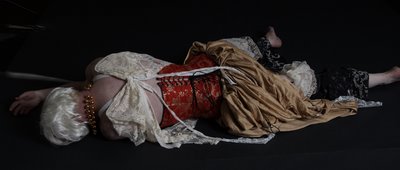 Kathleen posted one of my tainted angel photos but the above is even more so. The dear late lamented boyish boy. And I like the work of Majena Mafe, who seems to have tangentially linked to me by her copying of Alex Ross's longish enumeration; and isn't that a lovely bit of psychosis-engendering at the top of her blog?
Kathleen posted one of my tainted angel photos but the above is even more so. The dear late lamented boyish boy. And I like the work of Majena Mafe, who seems to have tangentially linked to me by her copying of Alex Ross's longish enumeration; and isn't that a lovely bit of psychosis-engendering at the top of her blog?Labels: beauty
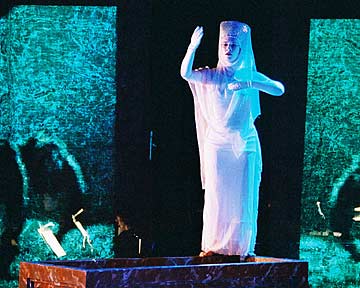 My friend Laura (pictured) and Lynne and I went to The North Beach Restaurant tonight where she reprised her unrestrained performance of a few years ago, singing some aria chestnuts and bringing all the wait & kitchen staff out from their hideaways to enjoy her lovely maturing voice. La Bohème mixed with Andrea Bocelli singing Return to Sorrento et al, a poor South Asian tourist family pressed into their seats, made somewhat uncomfortable at the absolute operatic decibel firepower aimed in their general direction. A delightful mix that reduced the headwaiter to sweats, chills and tears. As it should have!
My friend Laura (pictured) and Lynne and I went to The North Beach Restaurant tonight where she reprised her unrestrained performance of a few years ago, singing some aria chestnuts and bringing all the wait & kitchen staff out from their hideaways to enjoy her lovely maturing voice. La Bohème mixed with Andrea Bocelli singing Return to Sorrento et al, a poor South Asian tourist family pressed into their seats, made somewhat uncomfortable at the absolute operatic decibel firepower aimed in their general direction. A delightful mix that reduced the headwaiter to sweats, chills and tears. As it should have!
Labels: beauty, composition, mass, music

Even time has passed such that we, the belowmentioned, have gone on to our final remuneration or, as it were, our final judgement and, sitting at the hopefully rightmost hand of our omniscient and omnipresent maker, we will have to explain and make right to the throngéd celestial multitudes. Let us further note that the following is absolutely a work of fiction and that any similarities to persons living or dead is purely coincidental, etc.
Anywho, back in graduate school I fell in love (and let us be absolutely clear that this was a higher love - a chaste and perfect love) with a young man who, for want of a better sobriquet, we shall call Mark and who, one day many years later called me to attend the opening of Spawn, whereupon I waited in front of the Kabuki theater with the other unwashed until his limo arrived, spilling him, an assemblage of beautiful young things and a quantity of white powder onto the sidewalk, at which I, his heartbroken friend, was pushed into the gutter by his handlers and so onwards.
But, in my nervous and naive youth, Mark was a dream lover (platonic) and, while he was surely an harbinger of the many evil things to come, I drank deeply, ferociously, from the cup he offered. We were inseparable, sharing everything, making plans for our life together.
Mark was writing a thesis on antialiasing in computer graphics, at the time a fledgling field of study. He came to me one day after reading a paper by Yellot on the Poisson disk distribution of receptors in the eye and wondered if this seemingly haphazard array might have something to do with the lack of aliasing in the human visual system. We thought about it a bit; it made sense, since spectral aliases come from convolution in the frequency domain of the regularly spaced delta functions which are the transform of a regular sampling function. An irregular sampling function would clearly do something quite different, but what exactly? We fretted and suggested and made some mathematical attempts but Mark came across a paper by our savior, our Messiah, the Alpha and Omega man whose name fills the title of this entry: Oscar Aszer Zelig Leneman. Ah, what words, what ideas. We let them flow across us like new buttered honey over a sweet biscuit. In this paper, he laid it all out, a clear approach to determining the spectral noise of a wide variety of stochastic sampling patterns, including the Poisson disk but also many others. We saw how, by engineering the density function, one could improve the results, to spread the noise optimally to areas of minimal sensitivity of the eye, a clear indication of the Gnostic program, the mediocrity of the flawed Demiurgical God of the Old Testament compared to the higher consciousness of man. We found that a simple uniform jitter of the sampling point process by 50% of the mean sampling interval did extremely well. We thereupon danced an ecstatic gambol and wrote our first paper, Antialiasing through Stochastic Sampling, to be published and presented in SIGGRAPH '85 and Mark, in honor and gratitude, changed his middle name to that of our god.
However, as it turned out, another group at Pixar led by Rob Cook had been working on something similar and, as it also turned out, predated us but also, as it happened, had been in communication with Brian Barsky, Mark's ostensible research advisor who had advised them not to publish in SIGGRAPH '85 but rather in his journal, the Association for Computer Machinery's Transactions on Graphics which, he hoped, would replace SIGGRAPH as the Journal Of Record for the field, possibly detracting a bit from the brio and vivacity of the rough and tumble conference scene but lending the field a bit more of the staid orderliness that comes with a proper science. Unfortunately, the staid orderliness of TOG (as it was known to its friends) was chastened by the fact that its production was about a year behind schedule, meaning that their paper would come out so much later than ours as to be embarrassing. When the Pixar folks discovered our paper's imminent arrival - maybe because they were asked to referee, they 'smelled a rat' and assumed that Dr Barsky was 'fucking them over' to favor the advancement of his own soon-to-be newly minted PhD, a possibly not totally unreasonable position given the well-known dog-eat-dog nature of the academy, and they called him and may-or-may-not have explicitly accused him of said conspiracy. Mark and I, obviously, were delighted by the turn of events. A scrap, a brawl, a rumble between our society of distinguished scholars and the korporate brutes outside its containment shield. Hop la! And they were so concerned with it all! While we just saw it as a pleasant diversion. A bit of fun mathematics, a bit of fun programming, a chance to put little animal heads with exposed Brains into the text of our paper and our usual fantastic acknowledgement section with occult holocaust references and fake bibliography (e.g., Crash by J. G. Ballard), tickling the powers above.
And, oh my oh my, those powers above censored one of the brains! To wit, the most beautiful cat brain on page 77 of the proceedings, our coup de théâtre, that which would launch us into the Pantheon of the great minds of our generation. Happy to have our own reason to be incensed, we prepared a volley and launched it against the ACM's so-called Special Interest Group. We printed up a great number of errata sheets, like so:
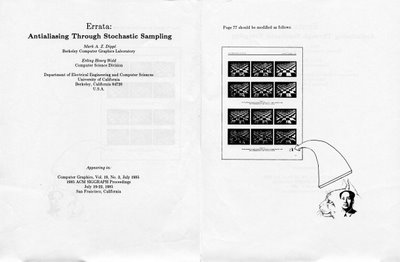
and passed them out amongst the multitudes of attendees, who dutifully took them and, ah joy of joys, dutifully looked up page 77 and placed them carefully inside, like the great Stalin's replacement of Beria in the Soviet encyclopedias with extended articles on the Bering Sea. We presented our paper to great acclaim, took our bows, and soon the Cook paper, Stochastic sampling in computer graphics, arrived in due course in the January '86 issue of TOG, his feathers having been smoothed by a contrite and ignorance-claiming (the simple truth) Dr "Brain" Barsky.
La la la. That could have been it, but we, suckled as we were on the sweet cream of de Sade, Survival Research Laboratories and the Kipper Kids dancing on broken glass, well, we couldn't just leave it alone, could we? And of course, we had in fact been asked, as the putative experts in the field, to referee the Cook paper, written before ours but oh so joyously presented for publication after, and maybe, just maybe, cleaned up a tiny tad. And we found problems with it. Hoo boy did we. It was hardly up to our fetishistic notions of proper academic-ness. How could it be? In our self-love and self-admiration, we had achieved the pinnacle and the rest of the world lay far below. While our phony bibliography was a work of the highest art, Cook's bibliography had the audacity to reference a Benjamin Franklin paper on magic squares, which they used as stochastic generators with no foundation, none of the mathematical underpinnings of our masterwork, only pictures which "looked good" (and they did look good at that.) We demanded that they reference our paper, being a seminal publication in the field, and we criticized and criticized and gave them low marks as we knew the paper would be published anyway. And wen it finally was a-borned, would we, could we, allow the dead horse to lie unbeaten? No, absolutely not, and we fired off an angry reply to the editor, a brilliantly worded rejoinder which led to a another rebuttal and the fun continued until we finally, our last bit of sperm spent across the face, fell back and slept, the deep and well-deserved sleep of the just and right and meek.
In the end, both papers have been cited quite a bit. We discovered quite happily that Oscar Leneman was a bit of a worldly fellow, having left the engineering profession after publishing the above pictured erotic illustrated fairy tale to deal in South Asian artifacts. Pixar got the patent on stochastic sampling, now expired, which we were once asked to help challenge in court, but declined, having gone on to better things: girls and drugs and Hollywood and the exciting world of The Opera and its ins and outs. Our math was used in textbooks as it was actually correct, but the weird Judeo-Islamo-Christian preoccupation with the one true God and the way He and His angels designed the eye in all its glory still seems to fascinate and lead people to the Poisson disk distribution even though it doesn't work so well and is in general harder to compute. Going up against God and His angels is of course difficult for mortal men, as hard as fighting City Hall, and doesn't really get one girls and drugs so in the end who cares?
Labels: beauty, engineering